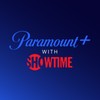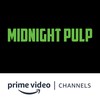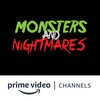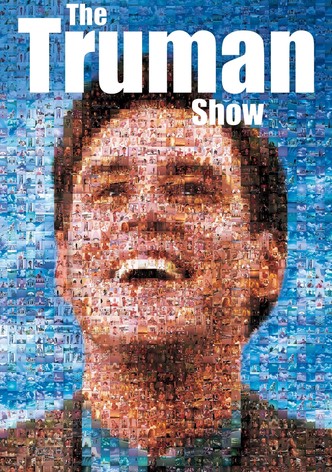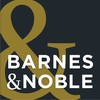Released in 1998, The Truman Show is a psychological comedy drama about a man unknowingly living inside a reality show broadcast to an international audience 24/7. Revisiting the movie, which is currently at 51 on the JustWatch streaming charts, is like watching a magician's trick in reverse.
Like the show's fictional viewers, we all know that Truman Burbank (Jim Carrey) was adopted by a movie studio and has been living inside a massive soundstage alongside actors and crew members who double as his supporting cast members. As Truman goes about his days, he and the audience (that's us) slowly pick up on all the little hints that reveal the truth about his plight.
All of them whisper the same truth. Truman's world has been meticulously built to contain him. Together, they expose the scaffolding behind Seahaven's sunny perfection, inviting us to question how easily comfort and familiarity can disguise control. While some of these tiny details are easy to spot, a few are so subtle that they completely change the way you watch the film once you notice them. Watch The Truman Show on Netflix, Hulu, and HBO Max now to spot them for yourself.
Vitamin D Tablets
It's easy to overlook the small bottle of vitamin D tablets on Truman's breakfast table, but it's one of the film's most quietly devastating clues about his plight. Vitamin D is often called the sunshine vitamin, absorbed naturally from sunlight. But since Truman lives in a sound stage, he never gets any real exposure to the sun. That's because Seahaven's sun is an elaborate lighting rig and its warmth is manufactured.
This single detail speaks volumes about the limits of Truman's freedom. The creators of his world have considered everything, even the biological consequences of keeping a man inside a dome. It's an unsettlingly practical touch that grounds the absurd premise in reality. Truman's body, like his life, is artificially maintained. The tragedy of this fact is that Truman doesn't realize he's trapped, but his routine already compensates for it.
The Newspaper That Mirrors Truman's Age
In a brief morning sequence, Truman flips through his local newspaper, The Seahaven Island Post. Although it seems pretty unimportant, a closer look reveals that the issue's volume number, 10,765, corresponds to Truman's age (around 29 years). The implication is that the newspaper, and by extension Seahaven's entire simulated history, has existed only as long as Truman has. The world was created with him at its centre, and its timeline is constructed to match his own.
The detail is so understated that most viewers miss it, but it reveals the depth of the production's artifice. Every calendar, headline, and routine has been carefully scripted to reinforce the illusion of an ordinary world. However, in Seahaven, there is no history, only continuity written to serve the show. It's actually one of the reality show's most chilling props since the contents of the publication are likely crafted with only Truman in mind.
The 'Leaving Seahaven' Sign
When Truman and his wife Meryl (Laura Linney) drive toward the bridge heading out of town, they pass a large sign that reads: You are now leaving Seahaven – Are you sure it's a good idea? While it's supposed to serve as a standard municipal notice, the wording hints at something more sinister. It's not meant for travelers; it's only meant for Truman. The sign functions as psychological conditioning disguised as civic messaging.
By framing departure as a bad idea, it reinforces the fear that keeps Truman obediently inside the dome. In fact, it's one of the earliest clues that Seahaven's geography is designed not only to contain him physically, but to manipulate him emotionally. When you rewatch the film, that sign becomes one of the clearest symbols of the show's quiet coercion. It's the voice of its creator whispering doubt into Truman's subconscious.
The Travel Agent's Makeup Bib
One of the show's biggest goofs happens well into the movie, when Truman starts to go "off script" and visits a travel agency to book a spontaneous trip. The agent greets him warmly, but she's still wearing her makeup bib, the disposable collar used before an actor is ready to head to the set. The slip-up suggests that the person playing the agent was hastily called into position after Truman's unexpected arrival.
She wasn't prepared for the scene, because in Seahaven, everything is scheduled around Truman's predictability. His deviation from routine forces the production to scramble. It's a moment of theatrical fracture as viewers begin to see how fragile the show's control truly is and how thin the veneer of realism becomes when Truman acts unpredictably. The makeup bib is a literal costume seam showing through the performance.
Classical Music
Throughout the film, Seahaven's radio stations rely almost exclusively on classical music or public-domain tracks. It's an artistic choice that doubles as worldbuilding. The producers of the reality show wouldn't pay royalties for new music. Instead, they use cost-free, familiar compositions to fill the silence. That practicality carries eerie implications. It means Truman's auditory world is as tightly controlled as his visual one.
Every note he hears is curated, safe, and predictable. There are no musical surprises, no unfiltered noise, and therefore, no reminders that a wider world exists beyond the dome. The soundtrack of his life is literally the background score of someone else's design. When viewed through this lens, even the moments of emotional resonance (the soaring strings or the nostalgic piano) take on a darker tone. They aren't expressions of Truman's feelings, they're manipulations of them.
Cameras Hidden in Plain Sight
From the film's opening sequence, viewers get to see how director Peter Weir populates Seahaven with hidden cameras disguised as everyday objects, streetlights, car mirrors, alarm clocks, and even buttons on people's clothing. But while viewers see them, Truman remains oblivious. This design choice serves a dual purpose. On one hand, it constructs the logic of the show within the film (how a 24-hour broadcast could plausibly capture every angle of Truman's life).
But on another, it implicates the viewer. Each concealed lens reminds us that we, too, are voyeurs. The ease with which the cameras blend into Seahaven's everyday objects reflects how surveillance thrives in plain sight. The film never calls attention to each hidden device. Instead, it trusts our peripheral vision. Once you begin to notice them, Seahaven stops feeling like a town and begins to feel like a trap. The invisible infrastructure of control becomes the story's true antagonist.
Names That Reference Hollywood Icons
One of the most overlooked but most genius parts of The Truman Show's reality show lies in its character and location names. Truman's wife is named Meryl in a nod to actress Meryl Streep. His best friend, Marlon, is named after Hollywood legend Marlon Brando. The town's main square is Lancaster Square, after actor Burt Lancaster. These references aren't arbitrary. They're a meta-commentary on performance and imitation.
Seahaven, after all, is a constructed Hollywood fantasy of small-town perfection. By naming its inhabitants after famous actors, it reinforces the fact that everyone around Truman is literally playing a role. It could also be seen as a sly jab at the entertainment industry since Seahaven is an idealized, sterilized version of Hollywood sold back to its audience as a version of reality. When you catch these names, you begin to see the entire town as a parody of the medium that created it.
Buildings That Don't Function
Production design plays a crucial role in the film's world-building. And nowhere is that more evident than in Seahaven's architecture. The buildings, while picturesque, are subtly wrong. Many have misaligned windows or doors that never open. Some appear unfinished from certain angles, like backlot sets dressed only for the camera's perspective. This architectural artifice is essential to the illusion. Seahaven looks perfect from Truman's usual vantage points, but it was never built to be functional.
The moment you realize this, the town's cheerful symmetry starts to feel oppressive. It's a world designed not for living, but for filming. These details also mirror the film's broader theme of simulation. In that sense, Seahaven's architecture becomes a metaphor for the entire reality show, captivating from the outside, but hollow within. It was already unsettling in 1998. But watching it now, with how prevalent faking an image for social media has become, gives it a whole new meaning.
Product Placement
The most self-aware element of the movie's reality show is its exaggerated product placement. Whether it's Meryl randomly hyping up a very specific coffee brand or the careful placement of regular items in every household, Seahaven is filled with obvious advertising. The show's sponsors use Truman's life as a platform for marketing, transforming his daily routine into commercial space. What makes this detail so effective is its normality.
The product pushes are seamlessly fitted into casual conversations, with cheerful sincerity. And to Truman, it comes across as everyday small talk because he doesn't know any better. Even his relationships are monetized, and every household item gleams with marketability. Truman's emotions, habits, and personal milestones are all designed for consumption. Once you notice this, you realize that The Truman Show predicted the age of reality television and influencer culture.
Days Off Disguised As Story
One of the film's most darkly funny subtleties is how the production quietly accommodates the cast's need for time off. Unlike typical television schedules with hiatuses and seasonal breaks, The Truman Show runs on a 24/7 loop. The actors may be playing roles, but they're still human beings who need time away from the show. The writers, ever resourceful, simply fold these absences into the narrative as if they were natural parts of Truman's life.
A perfect example comes up during Truman and Marlon's late-night conversation by the bridge. Marlon remembers how he got pneumonia after camping all night in Truman's backyard, and having to miss school for a month as a result. On the surface, it's a harmless anecdote about their long friendship. But the subtext is unmistakable. The actor playing Marlon needed time off, and the writers fitted it into the story of Truman's childhood.




















